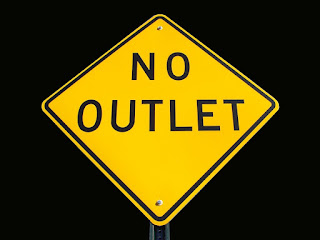1. When a leader is defensive and resists feedback, he is operating out of insecurity. Secure leaders invite feedback even when they disagree with it, and they are not defensive. In fact, secure leaders go to great lengths to know what their staff is thinking, to interact with them, and to keep themselves from shutting down discussions out of defensiveness. Personal defensiveness and healthy leadership are incompatible.
2. When a leader tells staff that they cannot talk to board members or others about issues or ideas, they are operating from a position of insecurity. Secure leaders welcome dialogue and do not put gag orders on their staff. Of course, once a team has decided on a course of action, they should all support it. But gag orders come from a leader who knows that there is no support from their staff and wants to hide it from others rather than resolve it. One of the marks of unhealthy church staff teams is the notion that staff cannot share their opinions or thoughts with others. Inevitably, this is a culture that will blow up badly in the end. It is a true sign of leader insecurity.
3. When a leader sees "loyalty" as meaning, you must agree with me, you have an arrogant or insecure leader. It implies that personal loyalty is more important than loyalty to the mission and well-being of the organization. That is a terrible assumption, and it comes out of dysfunctional leadership. It also implies that staff are simply there to do the bidding of the leader rather than to make a real contribution to the mission and strategy. Healthy leaders want staff who are loyal to the cause and respectful to one another.
4. When a leader regularly uses their "positional authority" to push people in a certain direction or get their assent, you have an insecure leader. Staff who regularly feel pressure to conform to the opinion or decisions of a leader and who have not been invited into discussions where they are stakeholders should recognize that they are dealing with dysfunction rather than health. All leaders use positional authority in certain but usually fairly rare circumstances. Those who use it regularly are saying, "I am in charge, and you will do what I say."
5. When people are publicly called out by a leader, you are dealing with an insecure leader who is using the public "calling out" as a power play to put others in line. It violates the dictum that we praise in public and deal with disciplinary issues in private. The very leaders who do this would never allow themselves to be called out in public. It is plain intimidation and unhealthy, and it says more about the leader than the staff member.
6. When a leader must have their own way on a regular basis, you have an insecure leader. Secure leaders want what is best for the organization, not their own way. Healthy leaders regularly modify their agendas and strategies in dialogue with their staff. Life is not about getting our own way but about accomplishing a common mission. The "my way or the highway" is an adolescent character trait rather than the trait of a mature leader.
7. When a leader takes credit for the success of others who made the organization look good, you have an insecure leader. Secure leaders do not need the spotlight, and they do not seek it. In fact, they go out of their way to give credit away rather than to keep it themselves. They know that success comes from a team, not any one individual, and they acknowledge that regularly.
8. When a leader regularly puts others down, you have an insecure leader. Usually, they put others down in order to build themselves up. Healthy leaders keep their own counsel on others and do not share negative information about others with others.
This is all about having a healthy self-image and good EQ. When that is not there, we end up hurting others in ways that may take years to undo. If any of these characteristics represent you as a leader, take note and work to correct the damage and your leadership style.




.jpeg)
